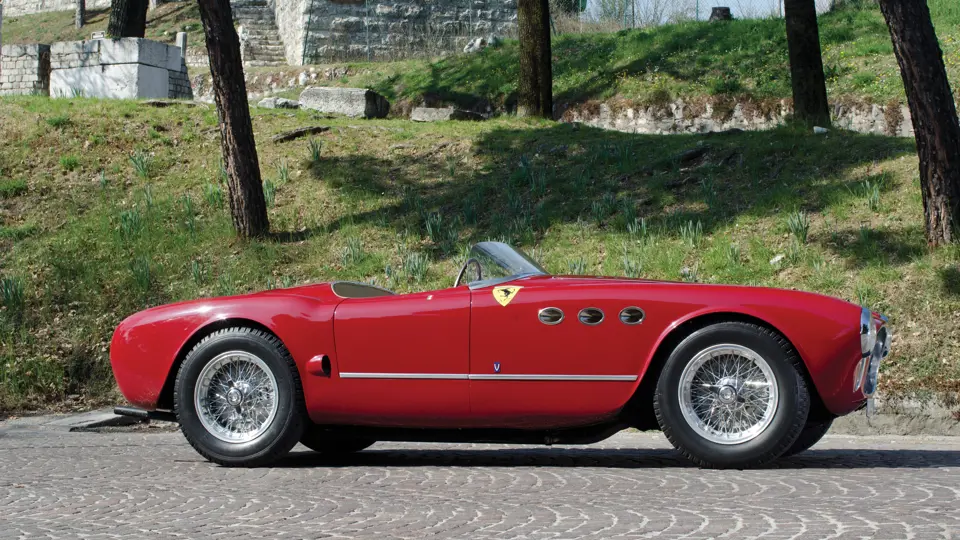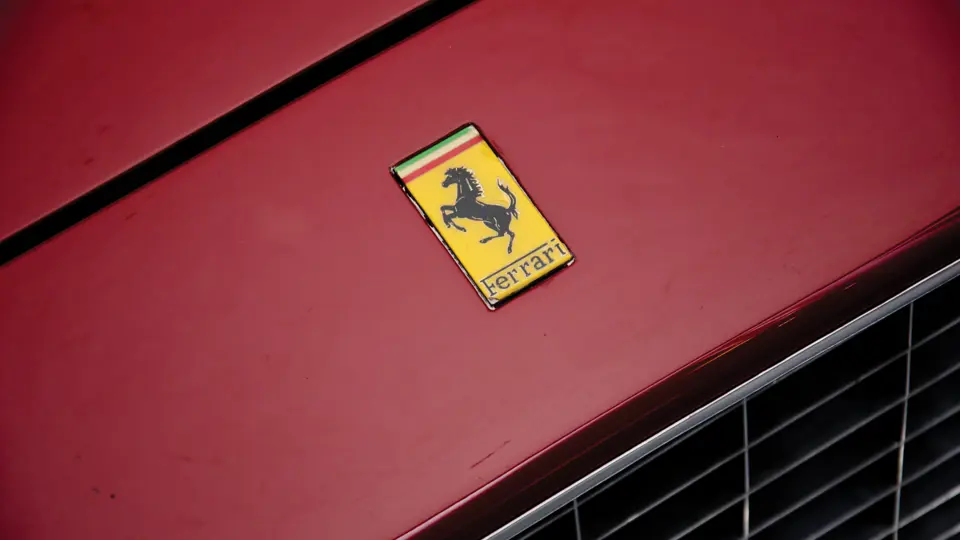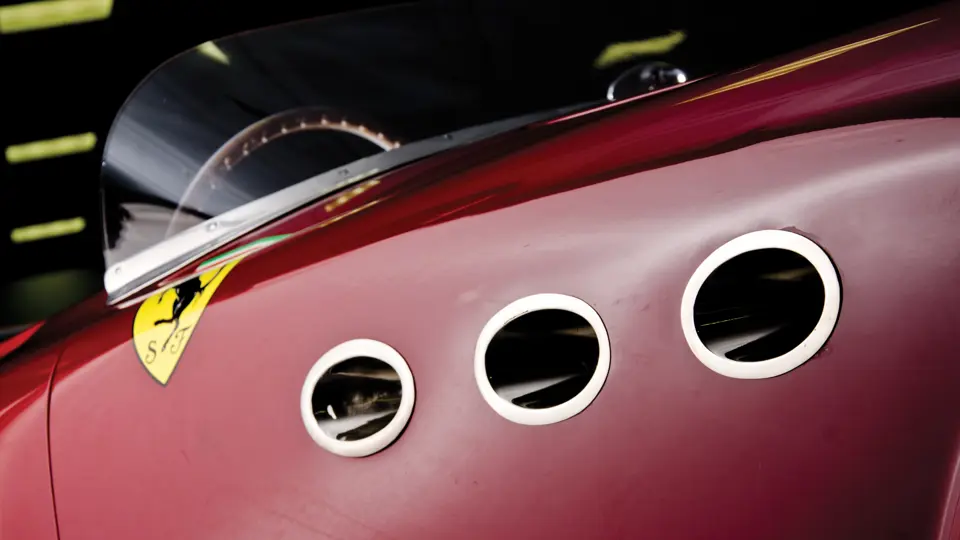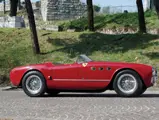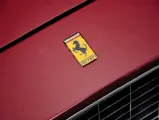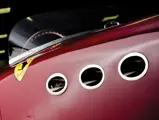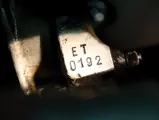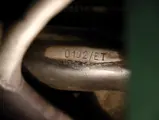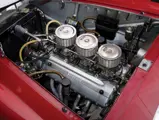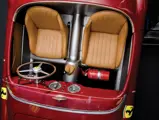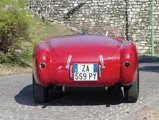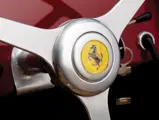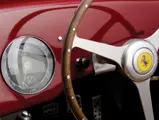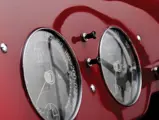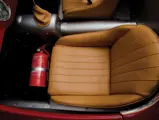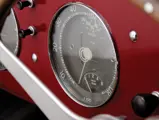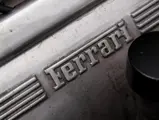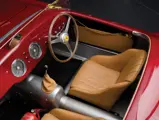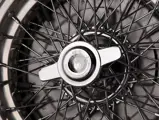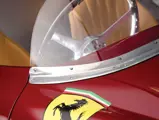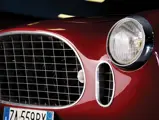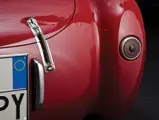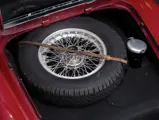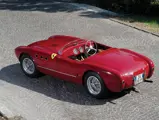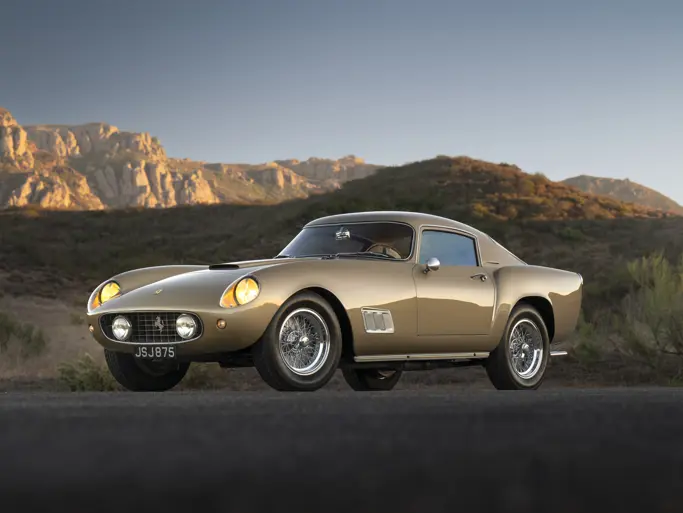210 bhp, 2,715 cc V-12 engine, five-speed manual gearbox, independent double wishbone, transverse lower leaf spring front suspension, live axle, double semi-elliptic longitudinal leaf spring rear suspension, and four-wheel hydraulic drum brakes. Wheelbase: 2,400 mm (94.5")
• One of the 12 Vignale Sport Spyders produced
• Matching numbers of the 1950s open 12-cylinder Ferrari
• International period racing history
• First OA at the Bologna Raticosa Hill Climb
• 1953 Argentine Sports Car Championship winner; numerous wins in Argentina
• Highly documented in print and in photographs
The number of different sports-racers and variants built by Ferrari during the 1950s provides a fascinating demonstration of both the uncanny adaptability of the Ferrari organisation and its willingness to build and develop single-purpose models to meet the requirements of specific racing events. In particular, the 225S remains especially significant as the evolutionary link in Ferrari’s DNA, leading directly to its series of 3-litre V-12 racing cars, beginning with the 250 MM and progressing through to the 250 GTO of the early 1960s.
Only about 20 examples of the 225S were constructed through 1952 and 19 of them, comprising of 12 Spyders and seven Berlinettas, were clothed with purposeful yet rather elegant bodies by Alfredo Vignale. This Spyder, chassis 0192ET, is the sixth of the 12 Vignale Sport Spyders built, and its bodywork artfully blends form and function with the coach builder’s characteristic triple ovoid front-wing chrome portholes and such competition-oriented features as a pair of small double air intakes on the hood, plus a pair of intake ducts for rear-brake cooling and twin rows of triple air outlets on the hood.
The foundation of 0192ET was the highly specialised ‘Tuboscocca’ frame layout, with double tubular outer members joined by a truss-type configuration, providing exceptional strength, and the ‘skeleton’, supporting the body panels. The Tipo 212 gearbox was assembled on 20 March 1952, and on 20 March, the chassis was shipped to Carrozzeria Vignale in Torino to receive its bodywork. On 28 June, the engine was assembled and tested on 3 and 4 July, followed by an overhaul and further testing on 16 July. On 22 September 1952, 0192ET was sold by the Ferrari factory to first owner Giuseppe Viannini, an Alfa Romeo dealer domiciled in both Milan and Buenos Aires.
The first race outing for 0192ET was on 11 October 1952, at the Bologna-Raticosa hill climb in Italy, with Pietro Palmieri, and the car raced number328, where it placed 1st overall. Next, Mr Viannini exported 0192ET from Italy to Argentina, where it was painted yellow and red and raced. In late1952, Viannini sold the car to José Maria Ibañez, a resident of Buenos Aires, who raced it extensively and quite successfully. The 1953 season started with a 3rd place finish, where the car race-numbered 3 at the Gran Premio de la Ciudad de Buenos Aires, with Ibañez at the wheel. He went on to race 0192ET at the Premio Verano, CAS, at the Autodromo Eva Peron at Mar del Plata, where, this time, he took first overall. In June, he was back on the track at the Gran Premio de la Ciudad de Buenos Aires, where he placed 3rd overall. The season continued at the Premio Verano, where, again, he took 1st place, followed by the Grand Prix Governador Carlos Evans at Mendosa, where he finished 2nd overall. At the final two races of the season, in Buenos Aires, Ibañez placed 2nd overall in both events. These stellar results netted Ibañez and 0192ET the Argentine Sports Car Championship.
For 1954, 0192ET was refinished in two-tone red and white and campaigned in Brazil and Argentina, with both Ibañez and Rafael Sedano Acosta having driving duties. 0192ET posted several DNFs, with its best a sixth-place finish, with Acosta driving at the Premio Invierno, CAS, Autodromo de Buenos Aires. Its last known race during the ownership of Ibañez occurred on 19 December 19 1954 at Buenos Aires, with an 11th overall result.
By 1956, 0192ET was owned by Juan Manuel Bordeu, also of Argentina, at the Autodromo de la Ciudad de Buenos Aires. Next, 0192ET passed through Luis Tula Molina, a businessman from northeastern Argentina, under whom the car was repainted green with a black hood, and later, sold in 1958 to Luis Escoda, who had the car refinished in red with white upholstery. Interestingly, by some accounts, Escoda sold the car to the owner of a poultry farm for 450,000 pesos; however, it was raced on 18 October 18 1959 at the Parque de la Indipendenza at Rosario, Santa Fé, by past driver Rafael Sedano Acosta, who used the comical alias "El Rosarino", and then, the car was reportedly sold that year by Escoda to his friend and fellow Argentinian, Alberto Luis Depego.
Depego entered 0192ET into the 31 January 1960 1,000 km of Buenos Aires, with him and Luis Escobar scheduled to co-drive, but the car did not start the race. The next known race entry for the 225S was 5 June, at the Autodrome of Buenos Aires (AAAS), where it was driven by Depego, race-numbered 5 and finished 6th overall. Engine failure forced a DNF in November 1960 at the 500 Milas Argentinas at Rafaela, Santa Fé, and the car posted a DNS that December at the Autodromo de la Ciudad de Buenos Aires, a fate that befell the car again at the same venue the following September.
Depego sold 0192ET in 1961 to Domingo Di Santo of Rio Cuarto, Cordoba, who damaged the engine during practice at the Cabalén racetrack, and subsequently, sold the Ferrari to another Argentinian, Humberto Evangelista. Mr Evangelista drove the car in competition through the end of 1966, with a second-place finish his best result, posted on 1 February 1963 at the Premio Ciudad de Chascomus. Thereafter, 0192ET was stored in Venado Turto near Buenos Aires, Argentina until 1980, when Hector Mendizabal acquired it. At this point, the 225S was painted red with a longitudinal yellow stripe and yellow decoration below the chrome strip on the body flanks, also sporting the script "Ferrari V12" on the sides.
The next major phase in the life of 0192ET began in 1980, when it was exported from Argentina to Italy by Mendizabal, subsequently passing to Giuseppe Bianchini, who commissioned its restoration in 1983. The body was restored by Carrozzeria Casella of Torino and painted dark red, whilst the mechanical restoration was performed by Gianni Torelli of Campagnola-Reggio Emilia, Italy, who is recognised as one of the best engineers when it comes to 1950s sports cars.
Once completed, 0192ET embarked on an equally active vintage racing career with Bianchini, beginning in May 1986, with entry into the Mille Miglia, followed by the AvD-Oldtimer-Grand Prix at the Nürburgring that year. Entries at the next four editions of the Mille Miglia followed with Bianchini, and then, in 1991, he sold 0192ET to one Mr Pederzoli of Modena, who raced the car at the Circuito delle Tre Province, placing 3rd. The next known race outing for 0192ET was the 1995 Mille Miglia. In 1996, Olivier Cazalières of Paris, France acquired the car, and in 1996/1997, AG Racing of Nice, France performed a mechanical restoration. Under Mr Cazalières, the car returned to the Mille Miglia in May 1998, and then, in late-June of that year, it contested the Ferrari Shell Historic Challenge at Dijon-Prenois, followed by July’s Coys International Historic Race Festival at Silverstone. In 1999, 0192ET was entered into the Tour Auto and Mille Miglia, the Shell Ferrari-Maserati Historic Challenge races during the L’Age d’Or meeting at Montlhéry and the “Tutte le Ferrari a Vallelunga” Shell Ferrari-Maserati Historic Challenge Finals.
The French enthusiast magazine Auto Passion published a colour feature on 0192ET in its July/August 1999 edition, and in February 2000, he displayed the 225S in a special Ferrari exhibit at Paris’ famed Retromobile show. Subsequent race outings during 2000 included the Ferrari Days at Spa-Francorchamps, 2000 Historic Grand Prix of Monaco, and the Shell Historic Ferrari Maserati Challenge during the Ferrari Racing Days in Hockenheimring, Germany.
In 2003, 0192ET was sold and became a part of a very important collection based in Brescia, Italy. Under his ownership, 0192ET was driven that year at the Le Mitiche Sport a Bassano meeting and most appropriately, the 2005 and 2007 editions of the Mille Miglia. Campaigned with few interruptions ever since new and accompanied by an extensive collection of photographs, 0192ET is very well-documented, having been pictured in the official Ferrari Yearbook 1953, issue 158 of the Prancing Horse, the Ferrari Club of America magazine, and within the definitive book Ferrari Argentina, Sports Cars, authored by Cristian Bertschi and Estanislao Iacona. Incredibly rare, steeped in history throughout its life and highly documented with remarkable provenance, 0192ET remains simply impressive as one of Ferrari’s groundbreaking early-1950s sports racers, with striking open coachwork by Vignale.

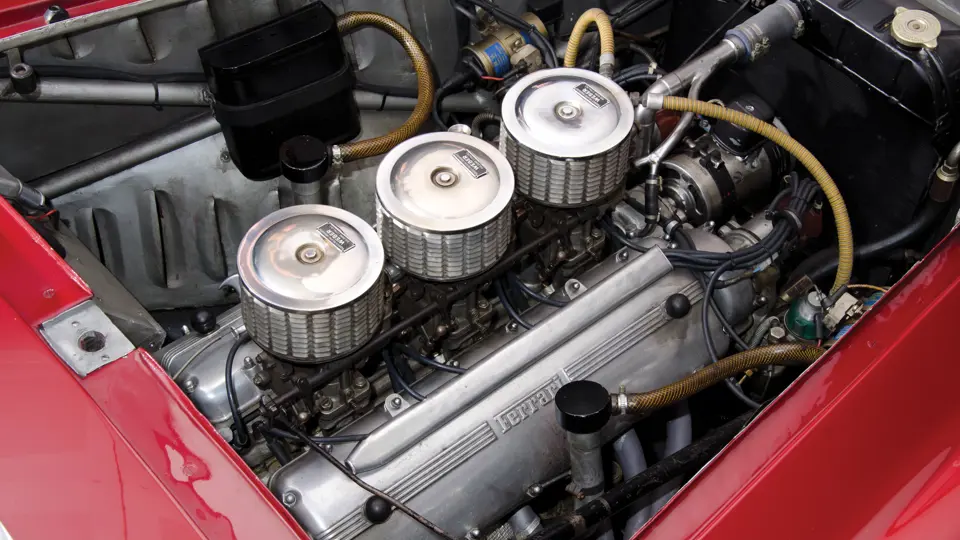


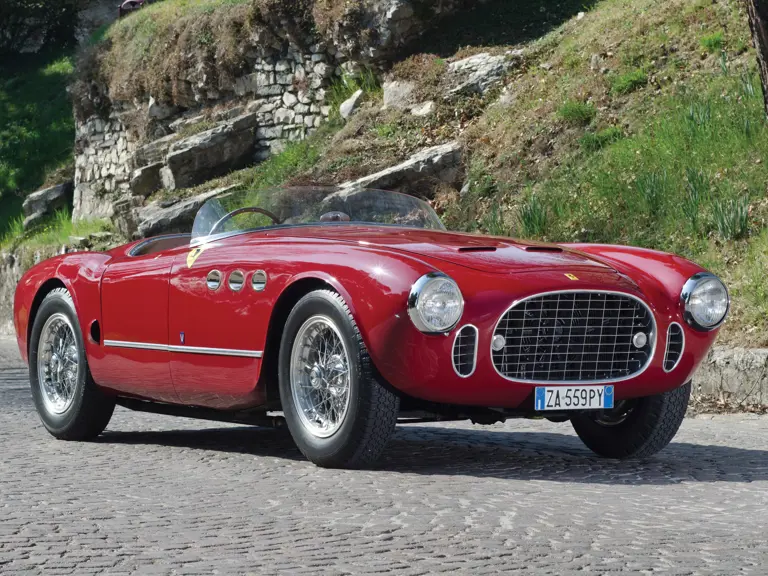
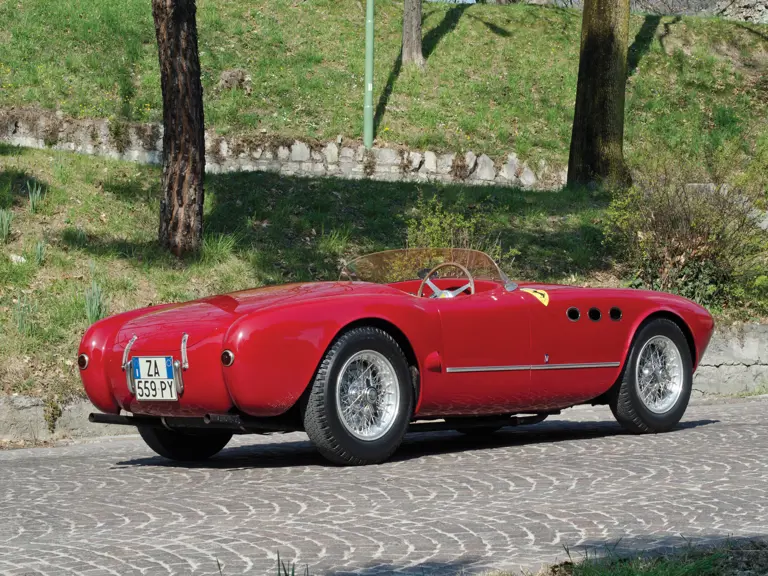
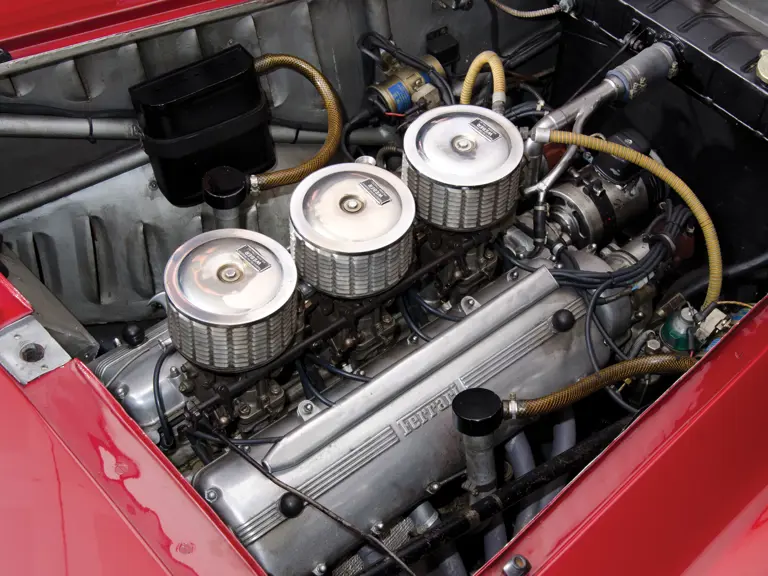

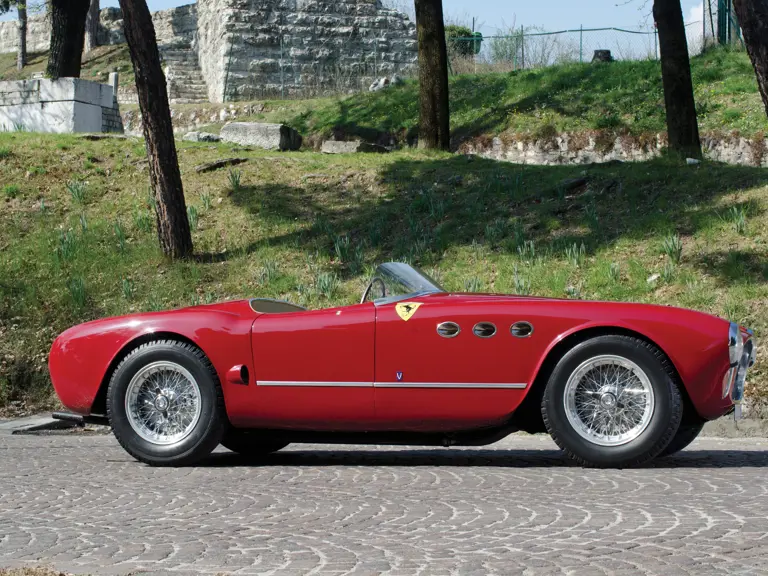
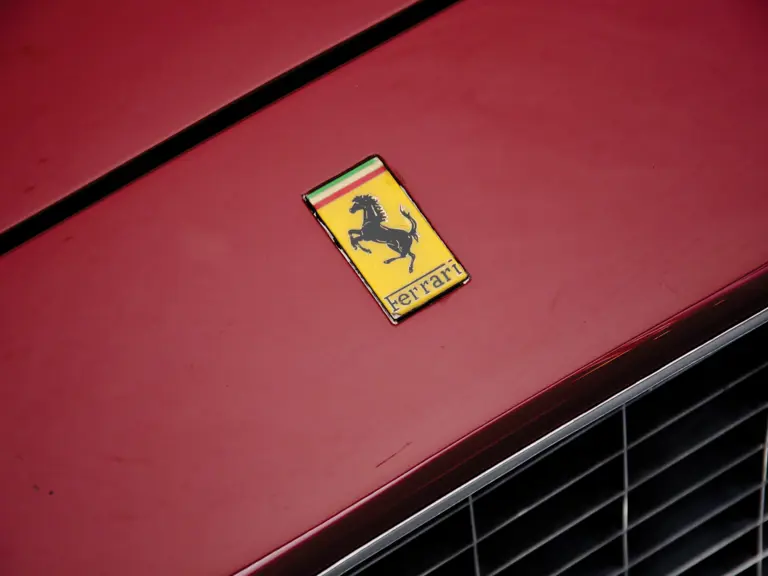
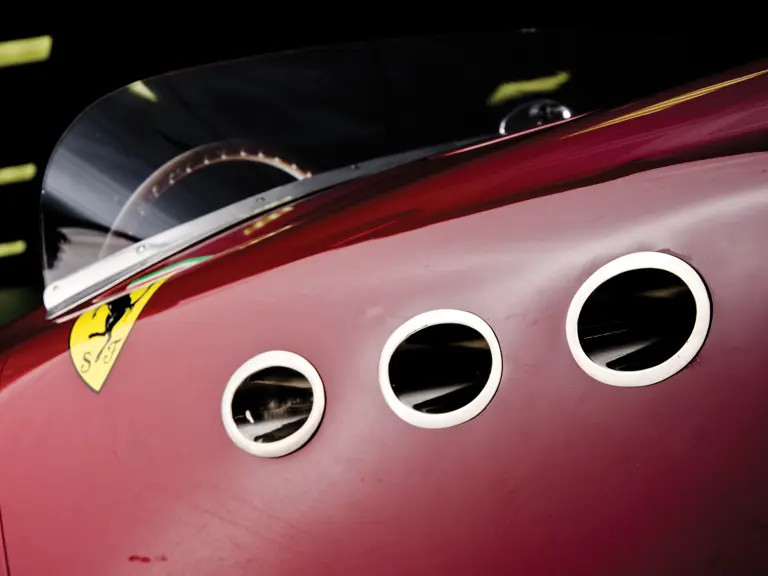


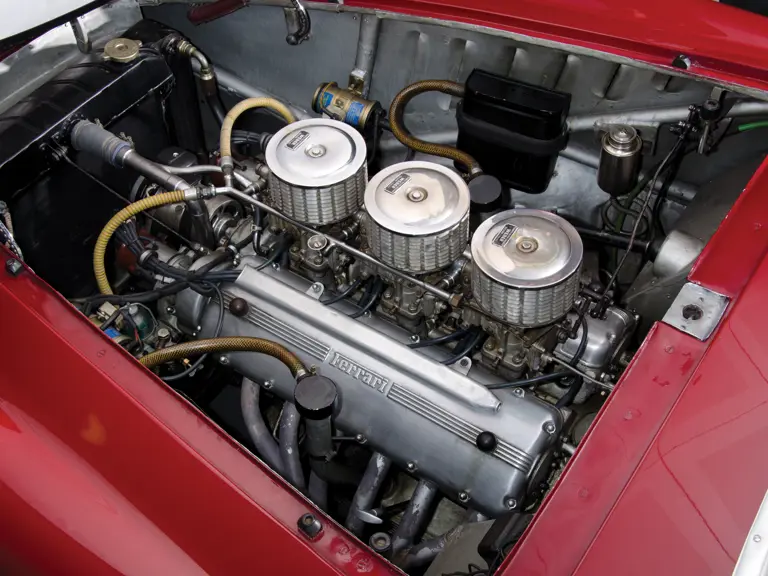

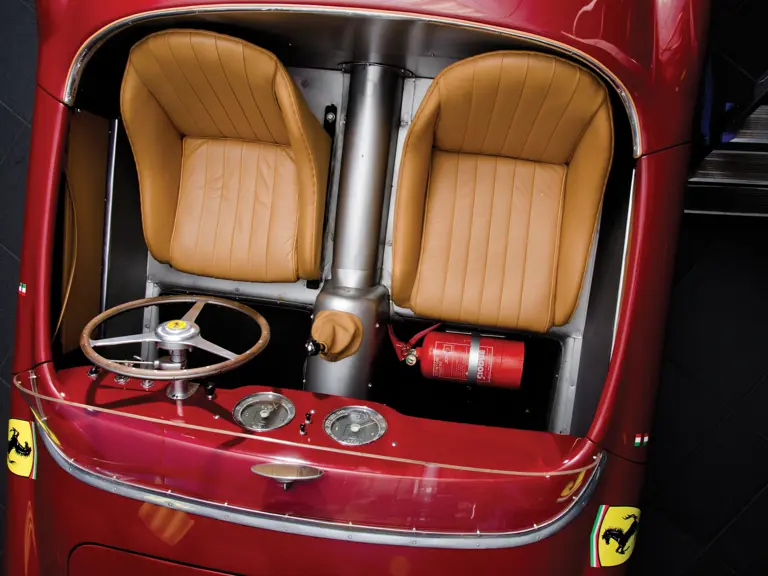
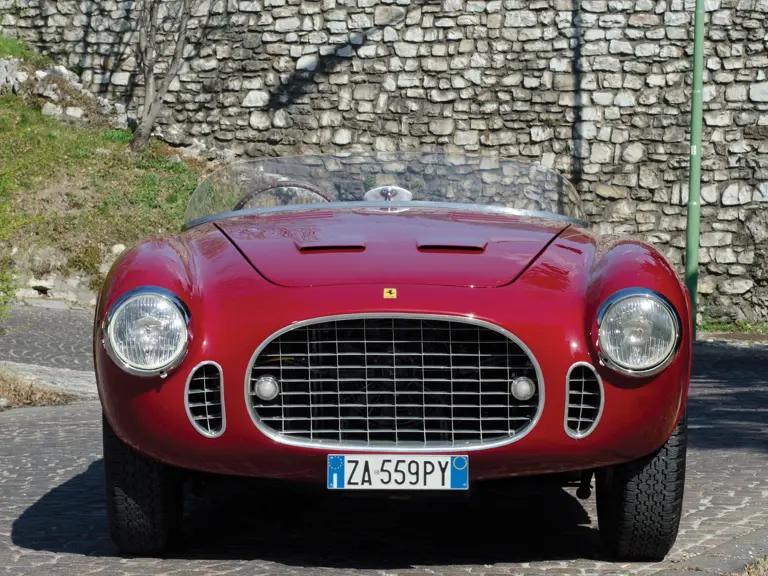
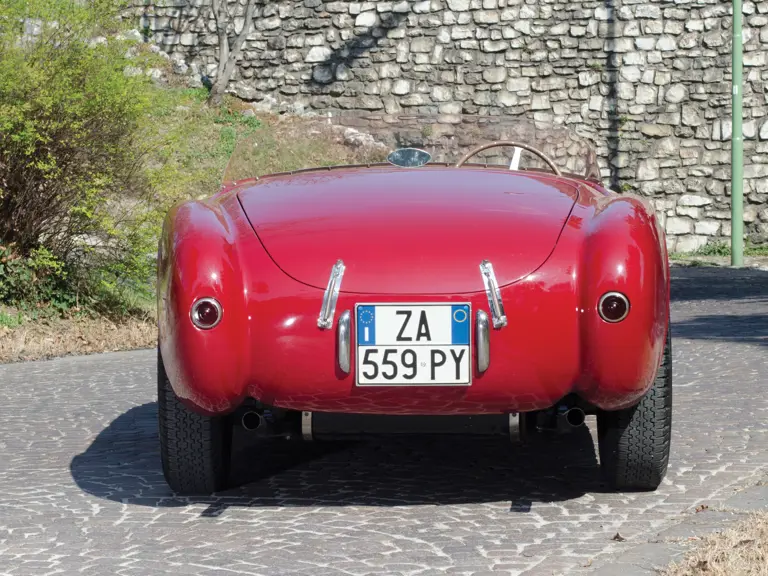
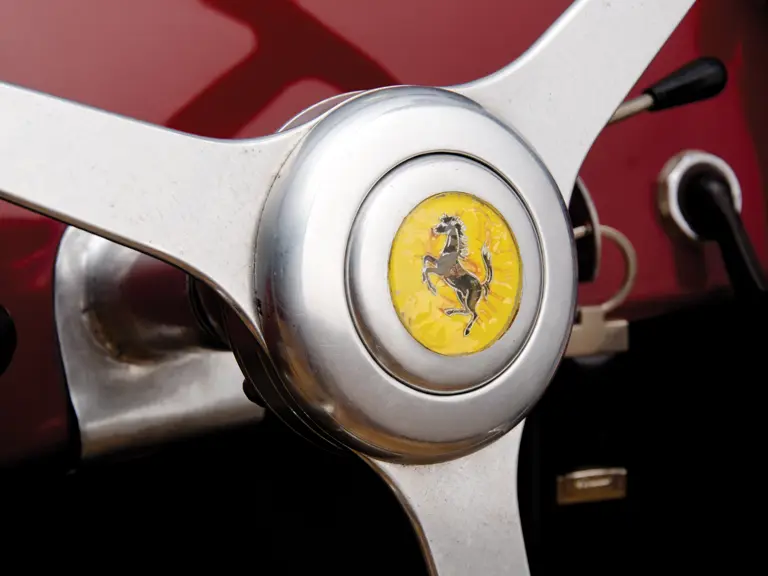
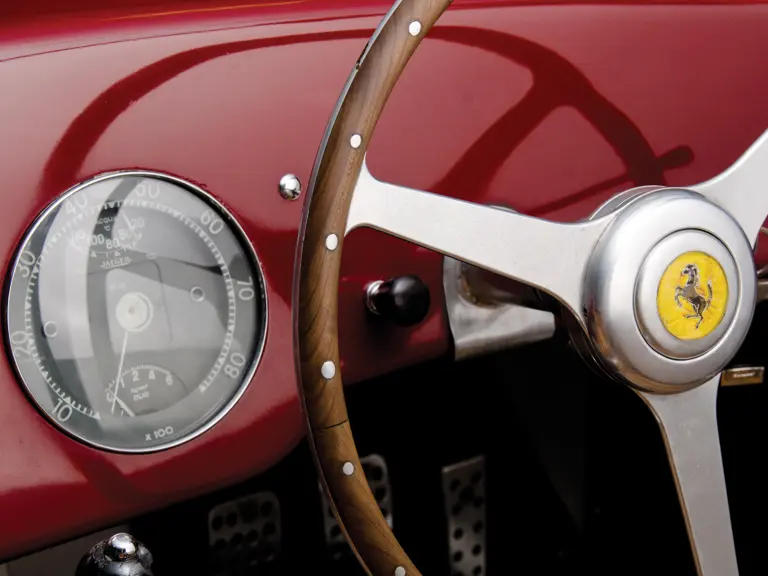
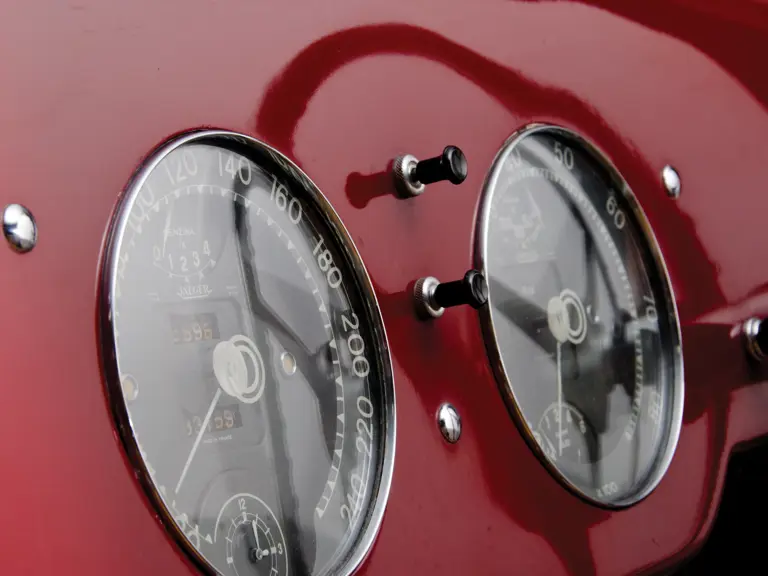
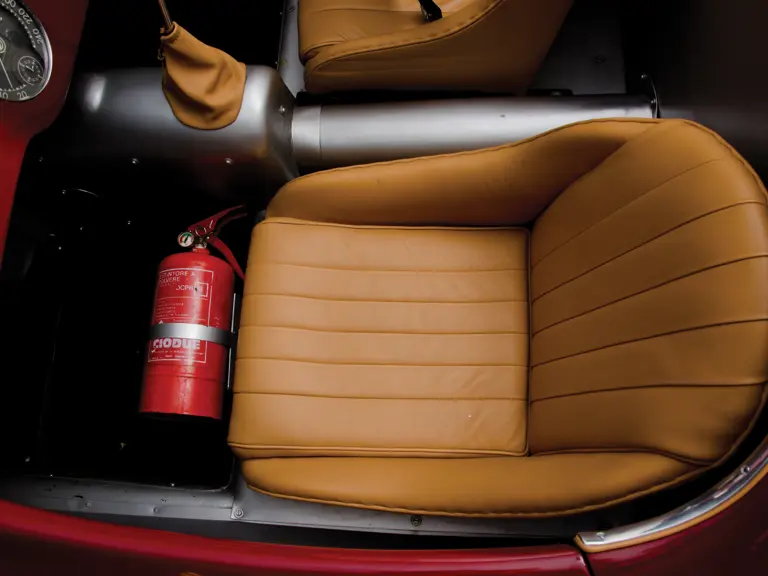
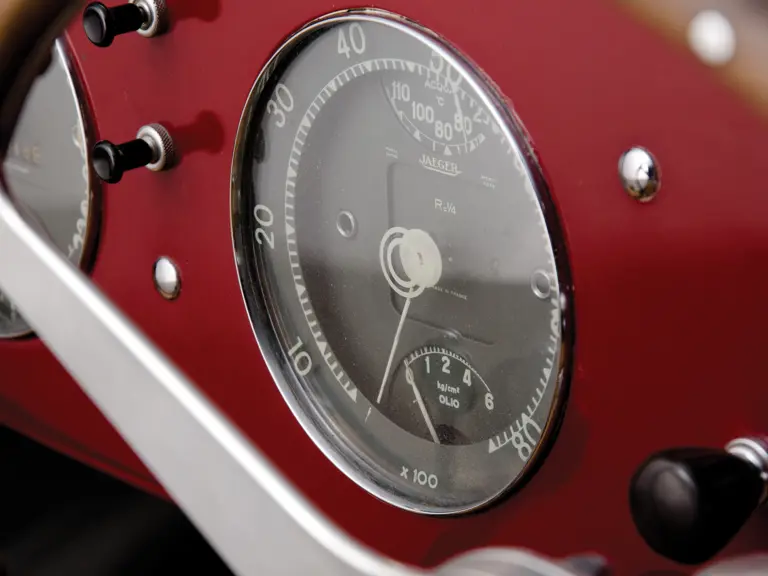
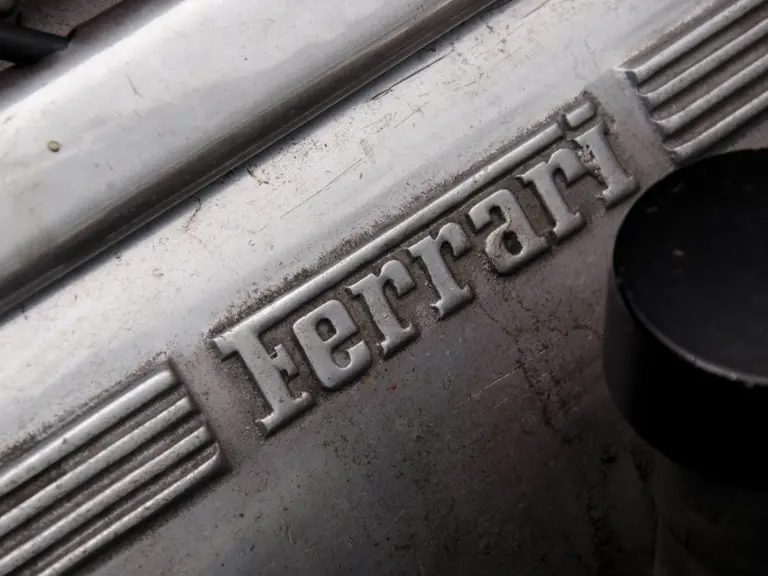

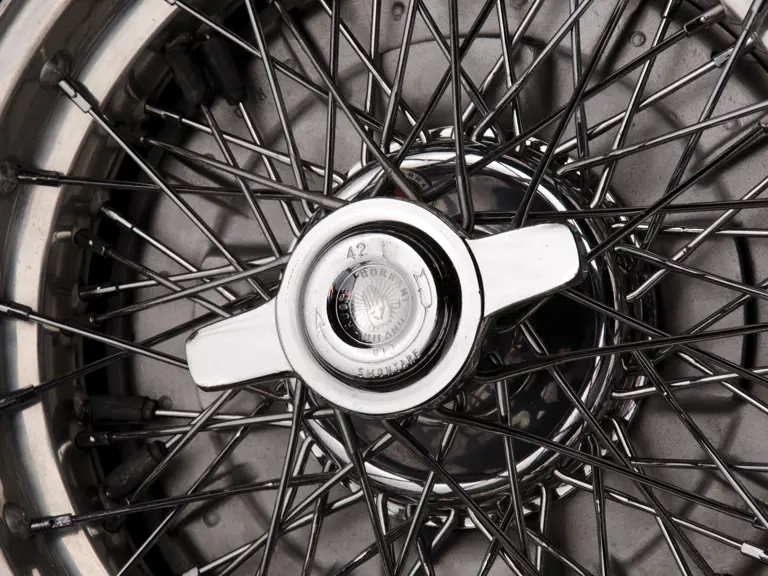
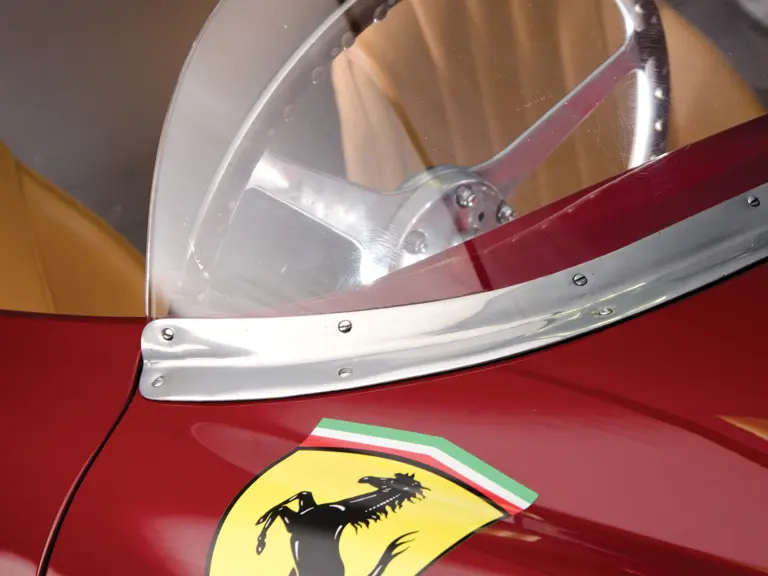
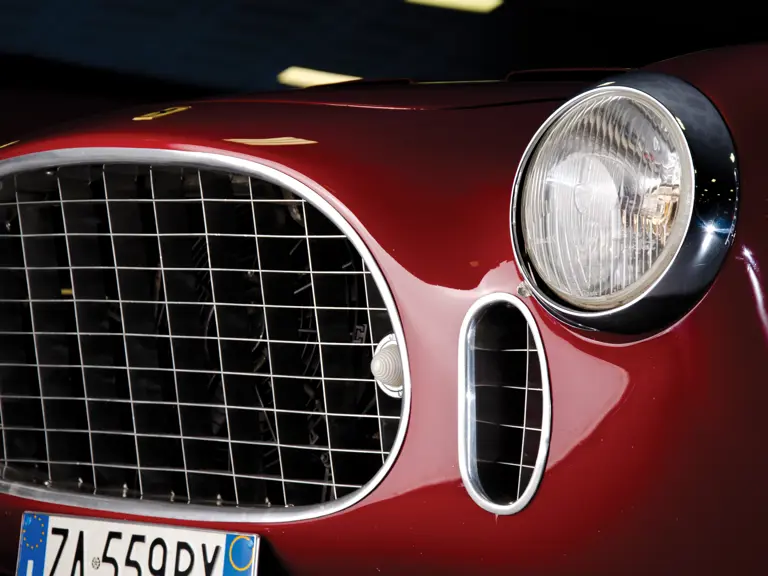
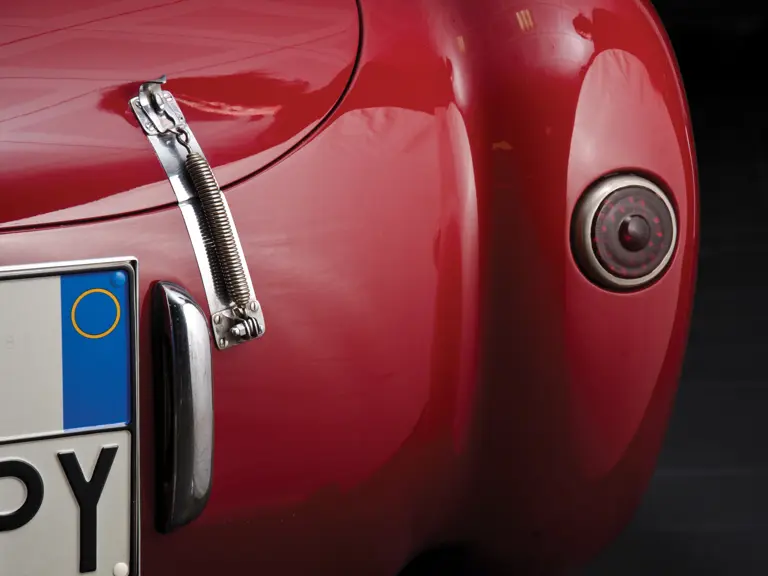
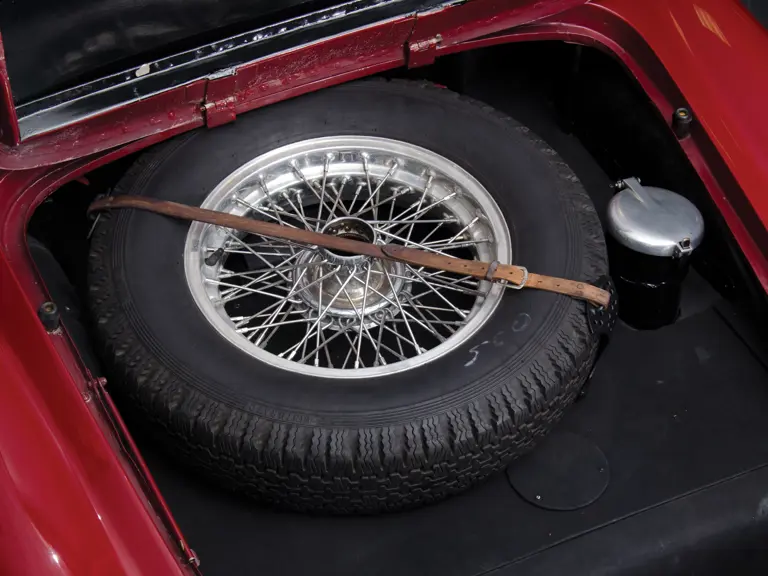
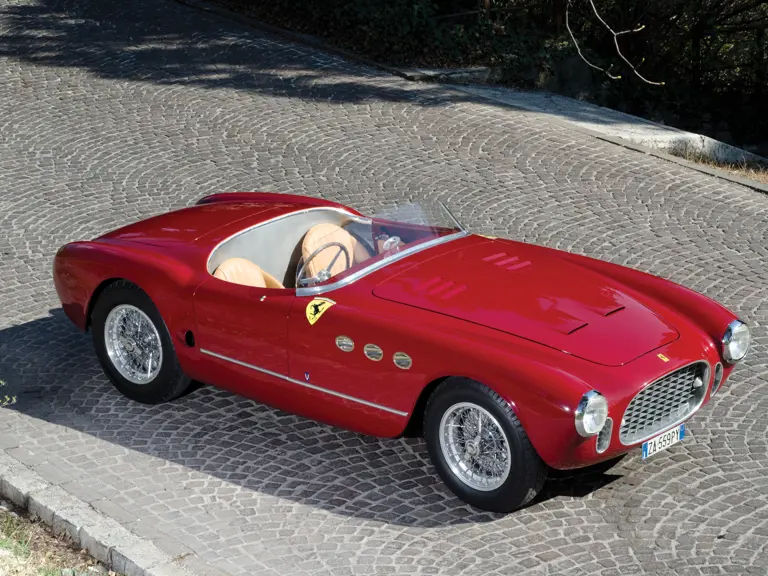
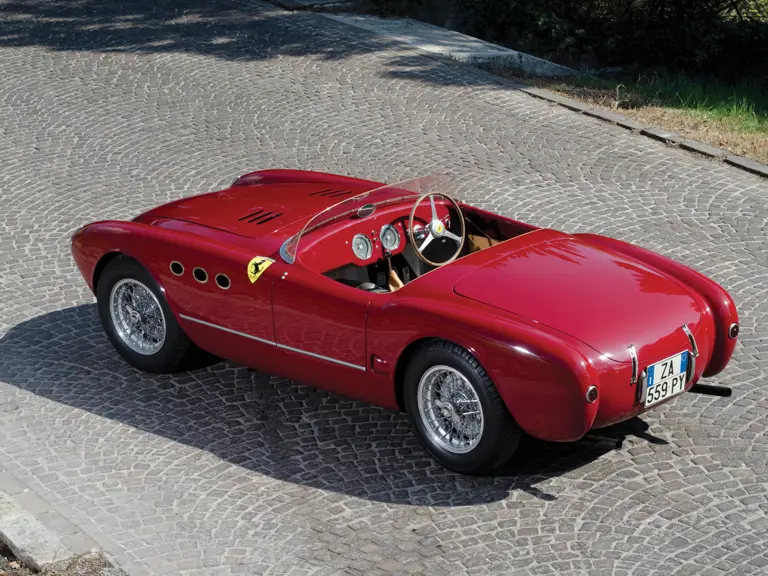
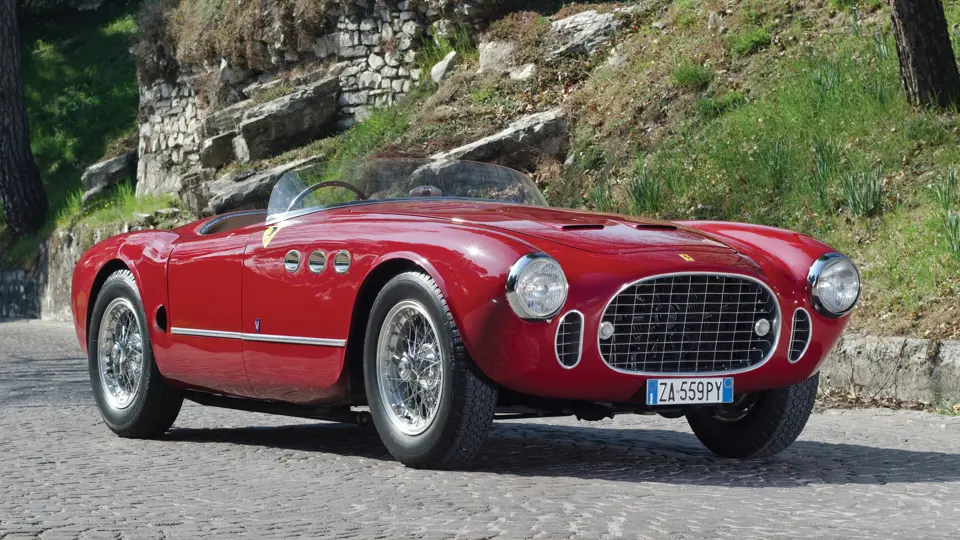
 | Monaco, Monaco
| Monaco, Monaco
